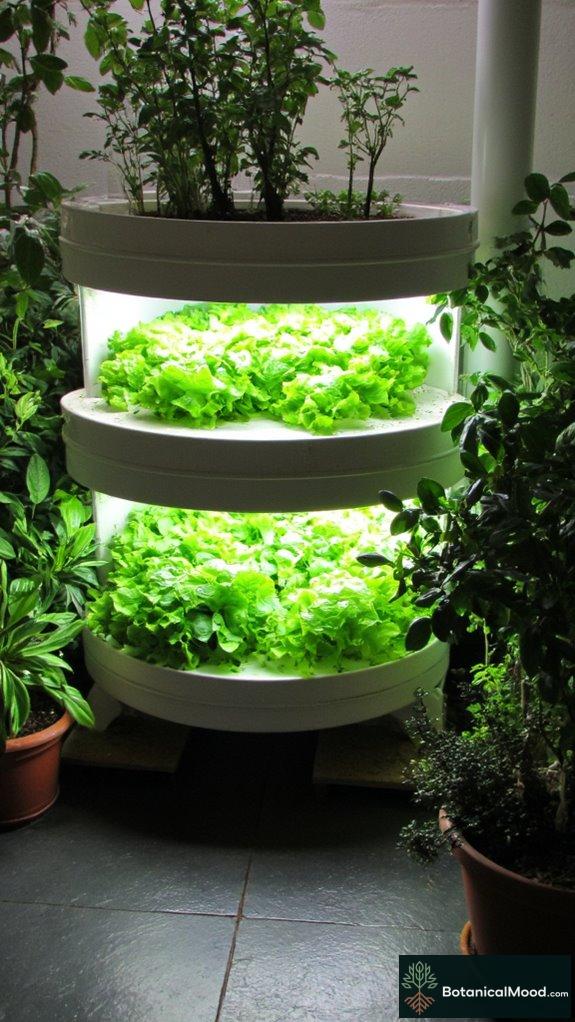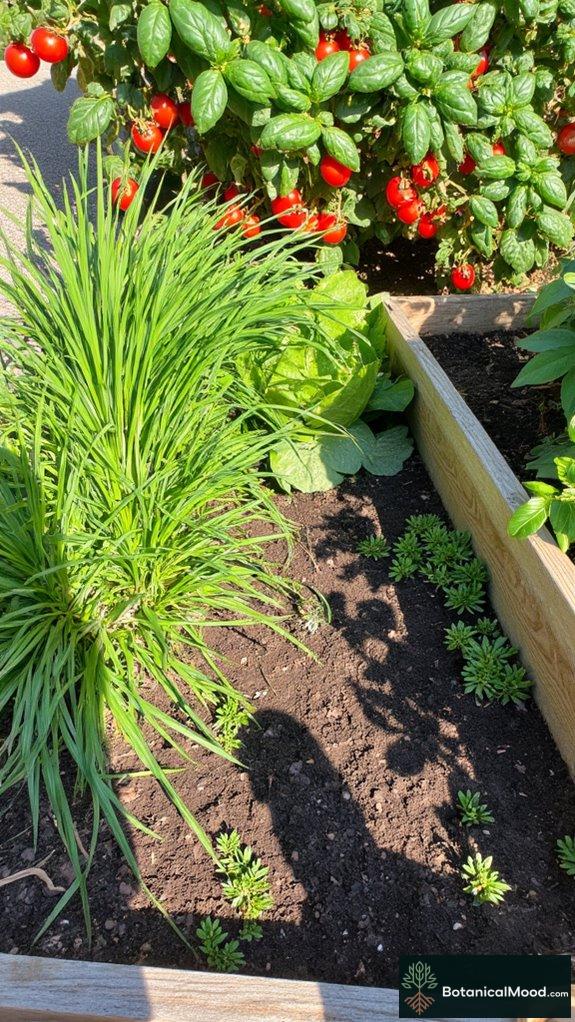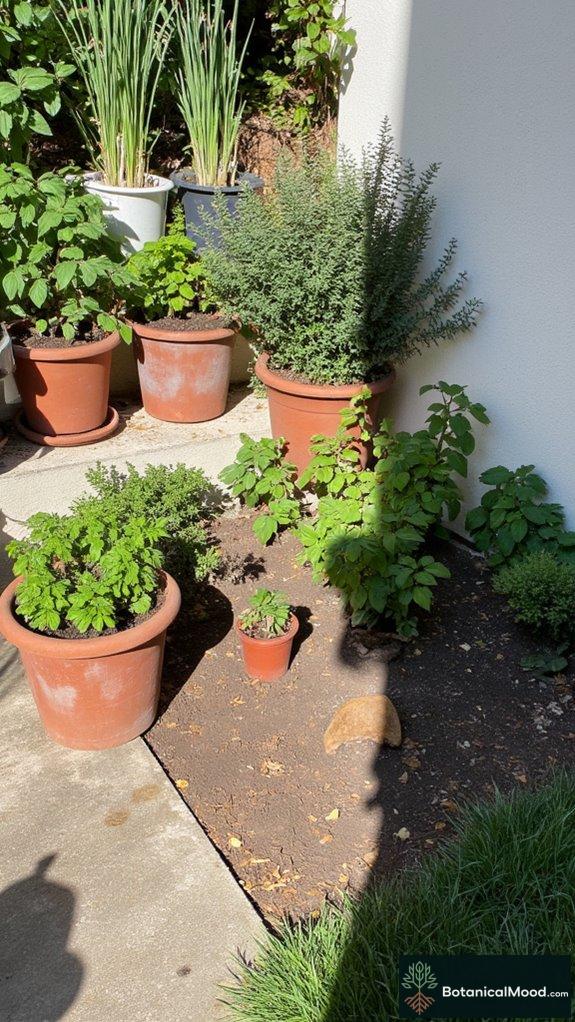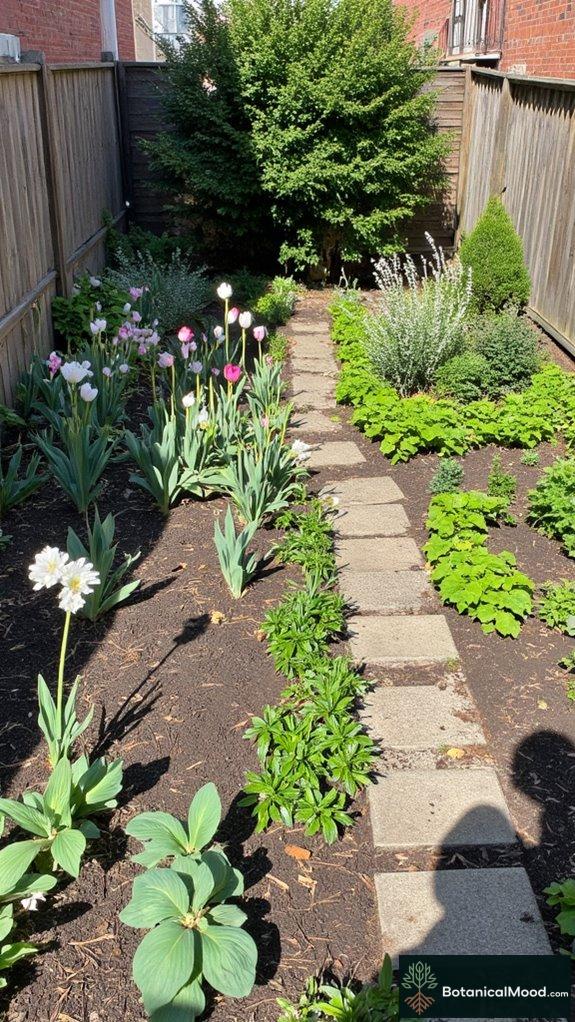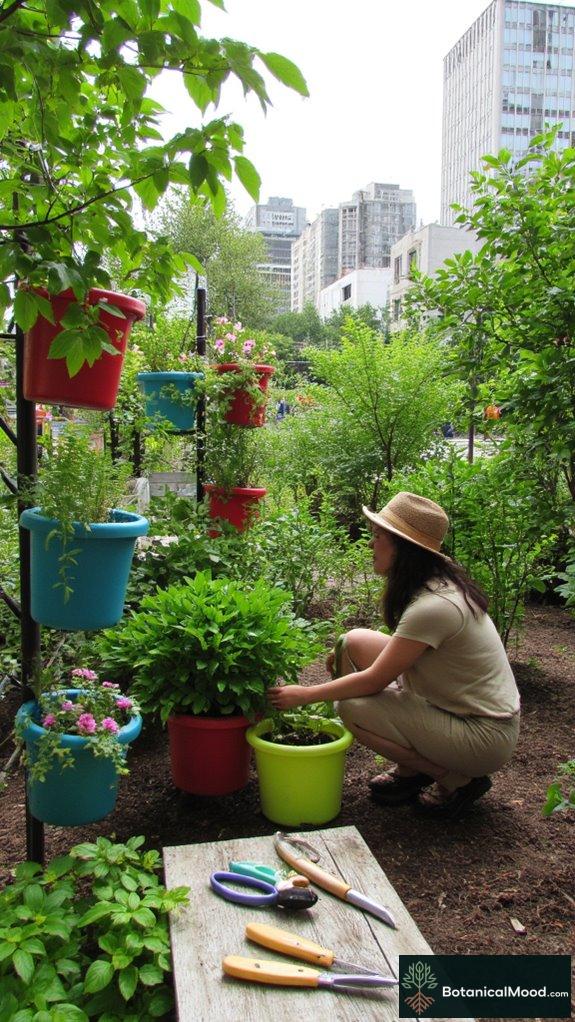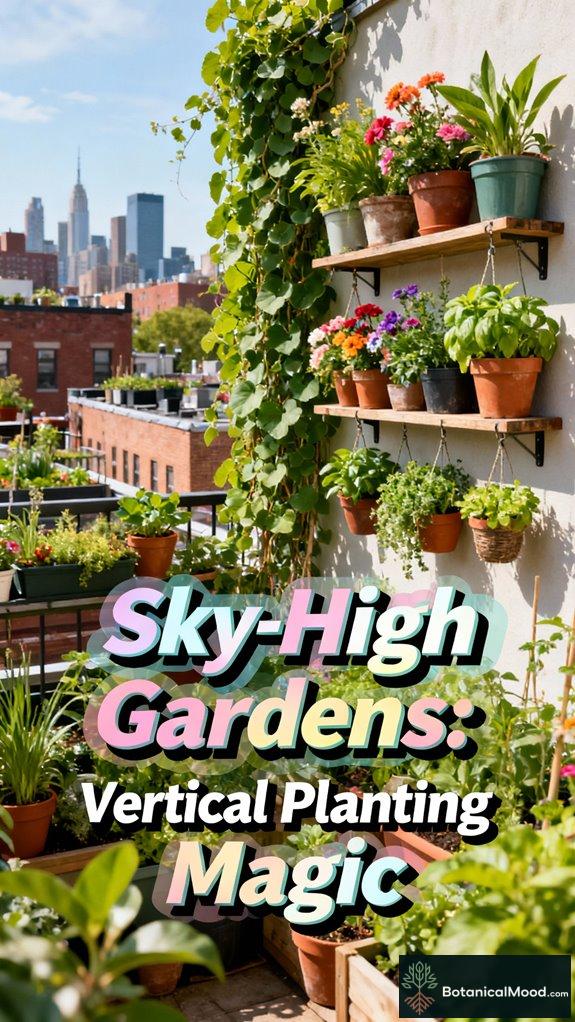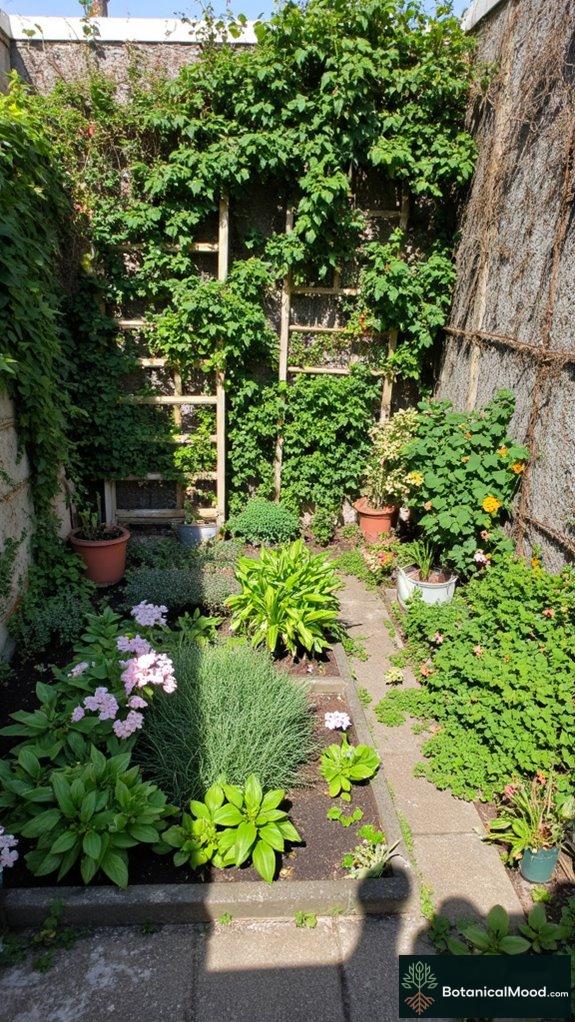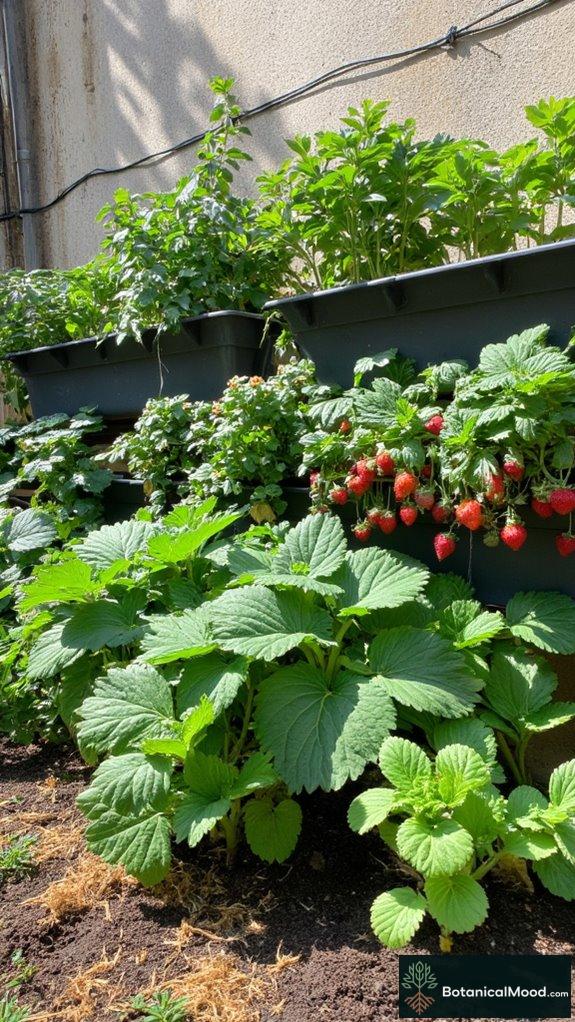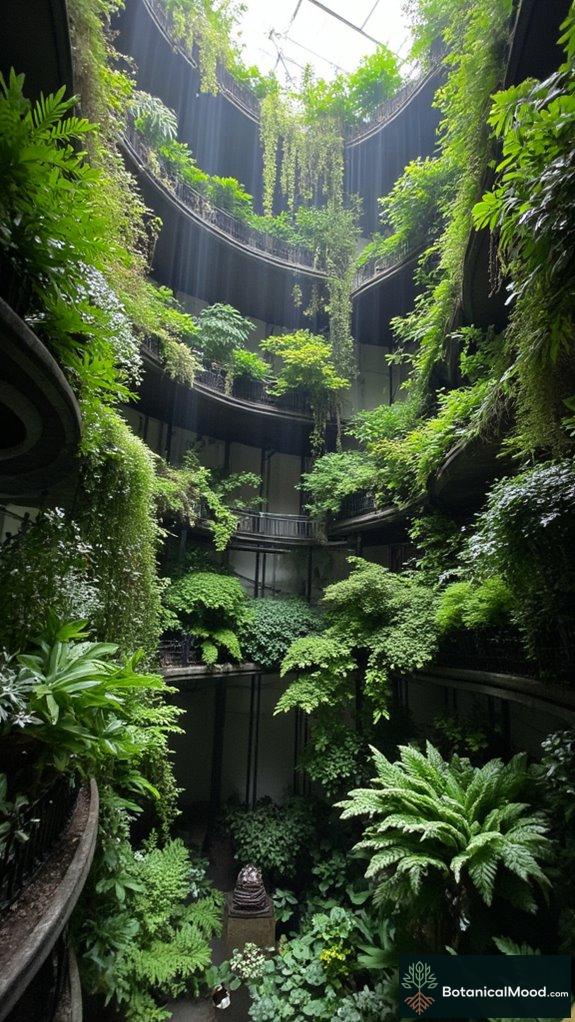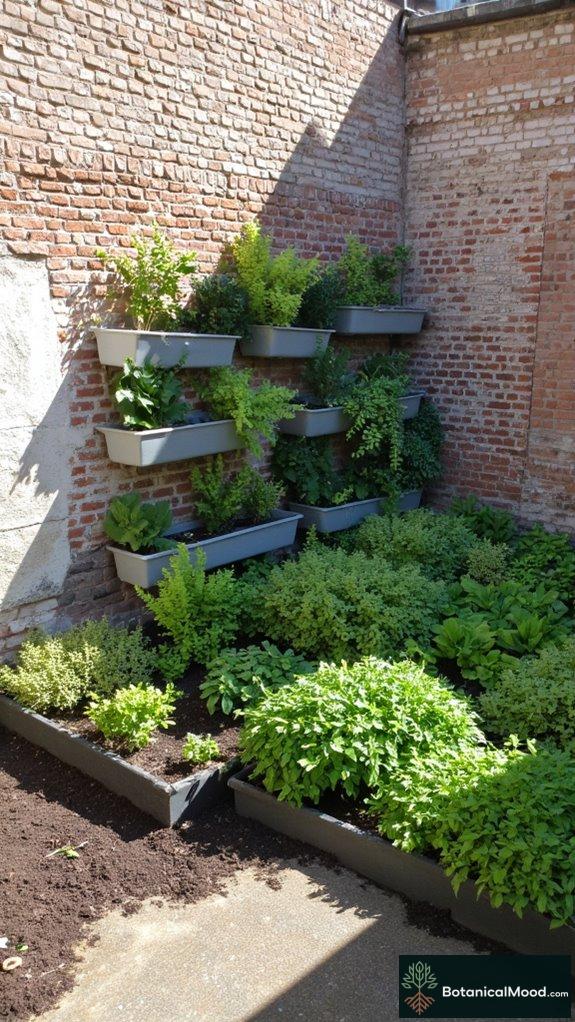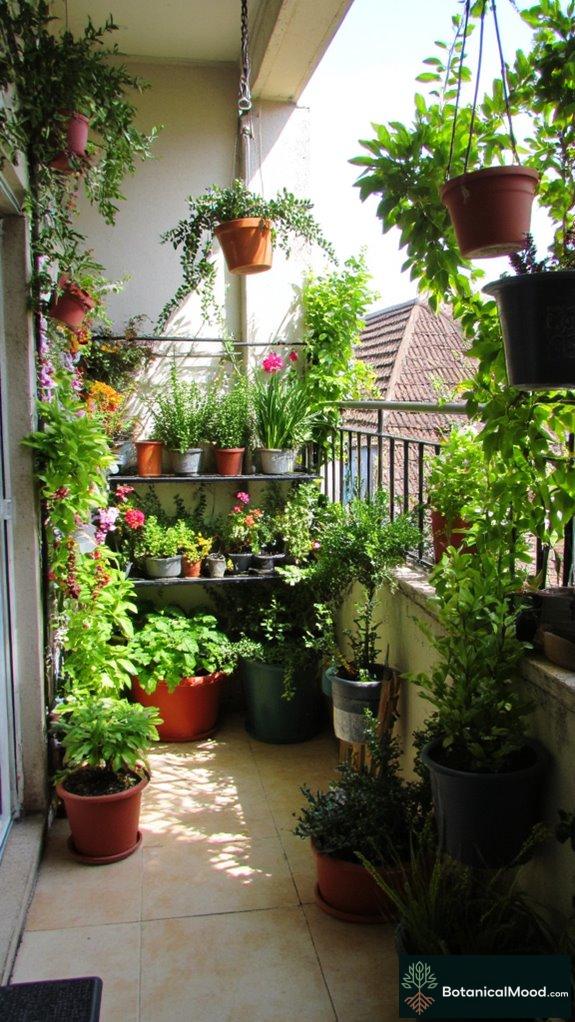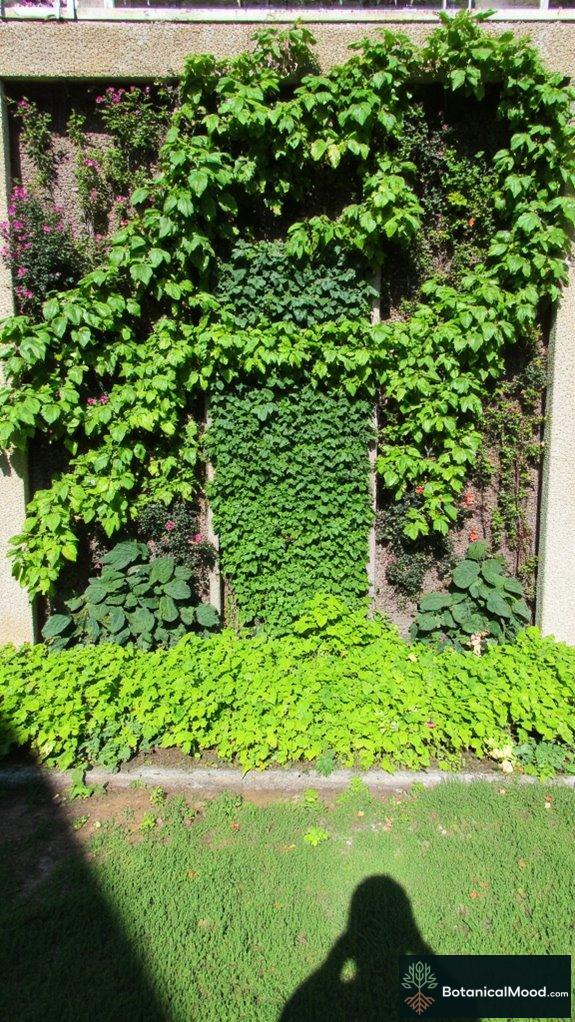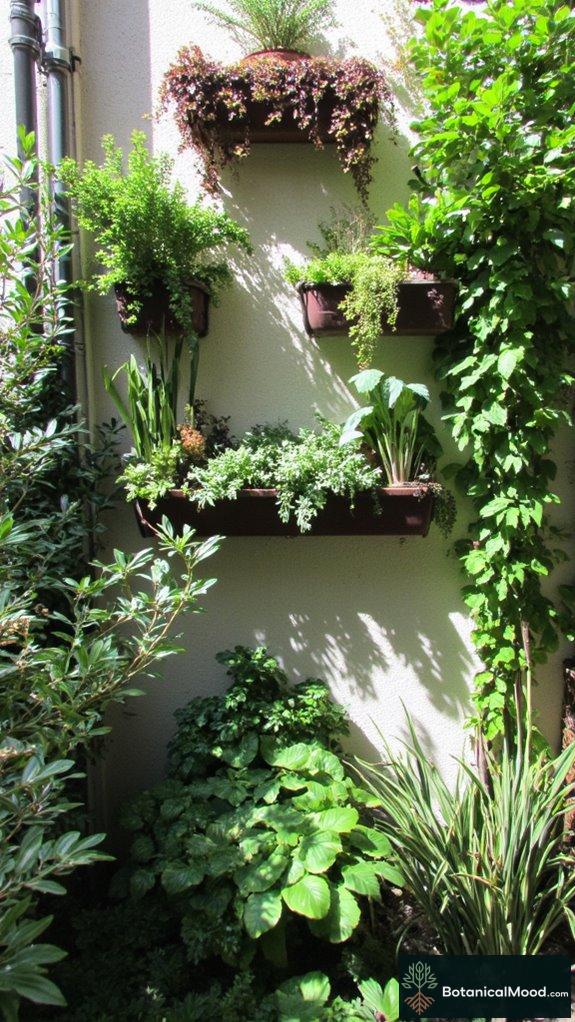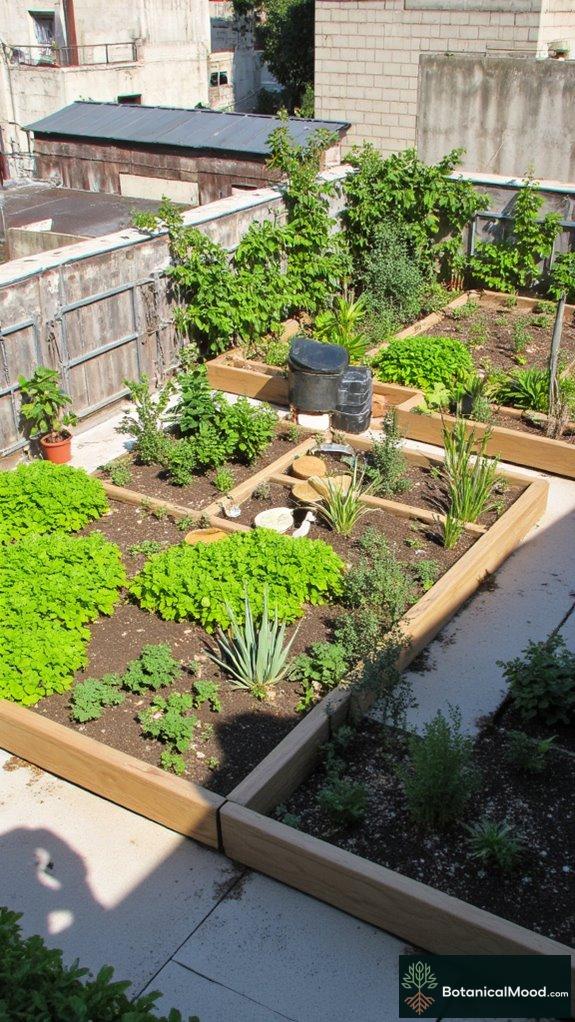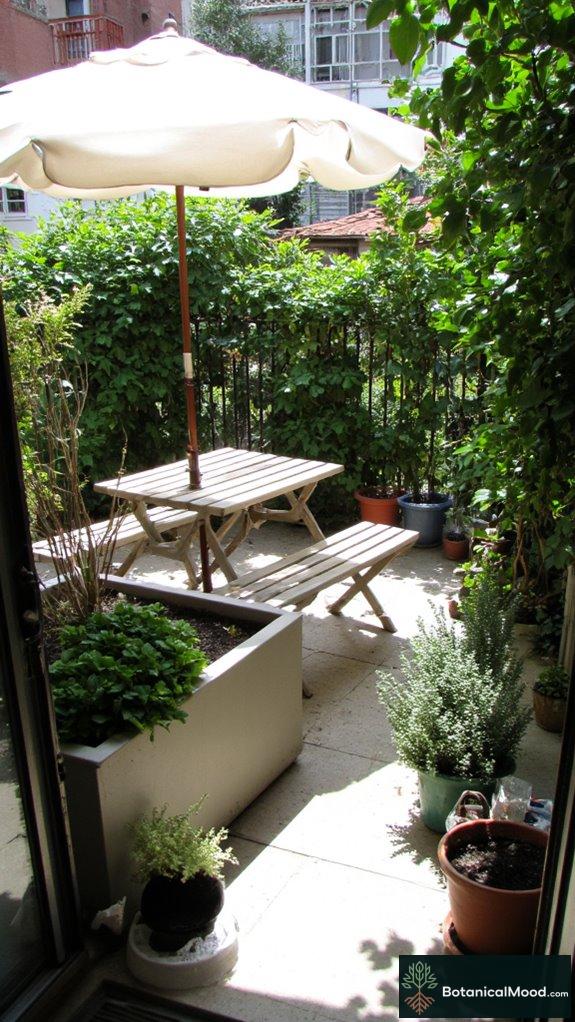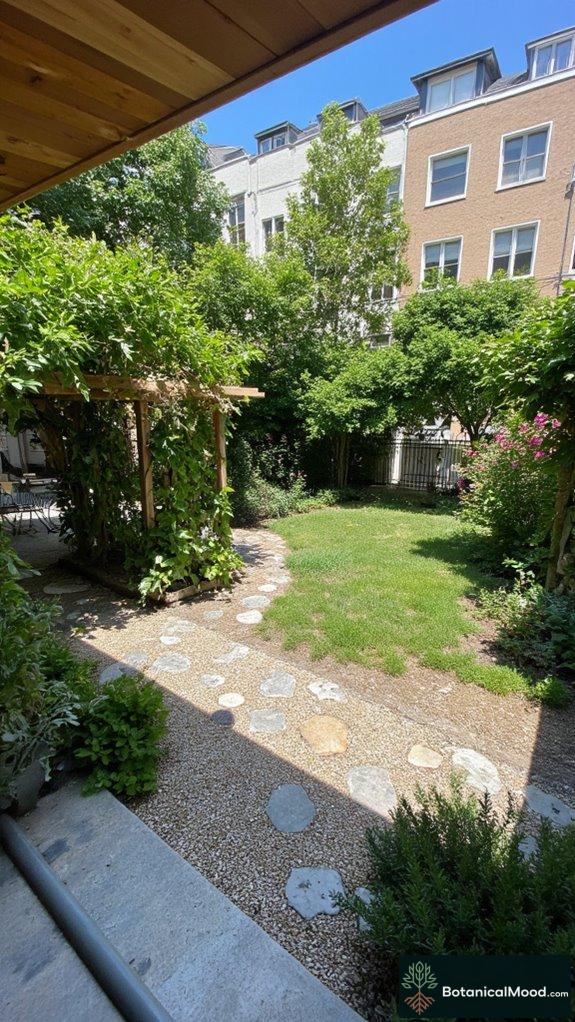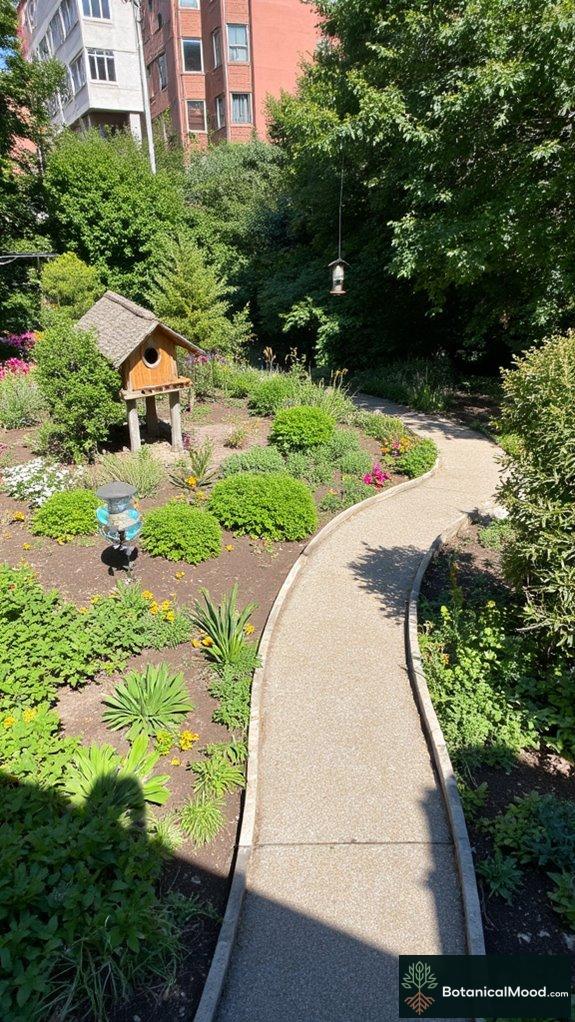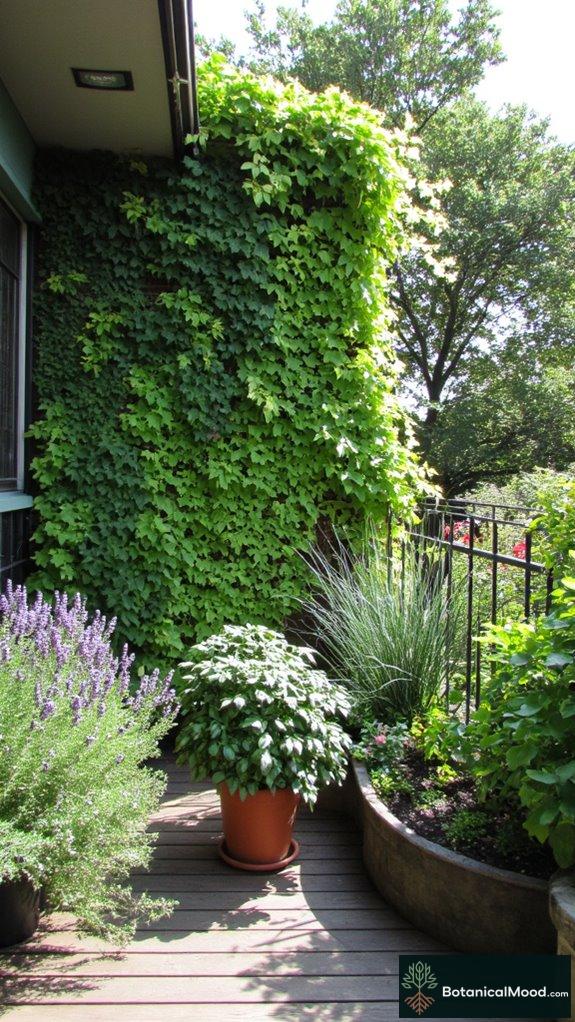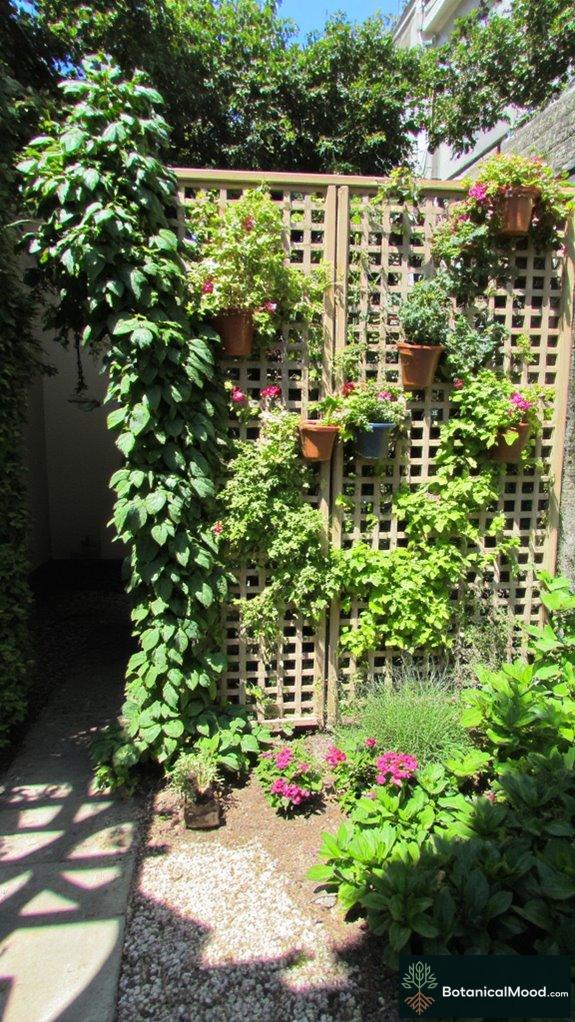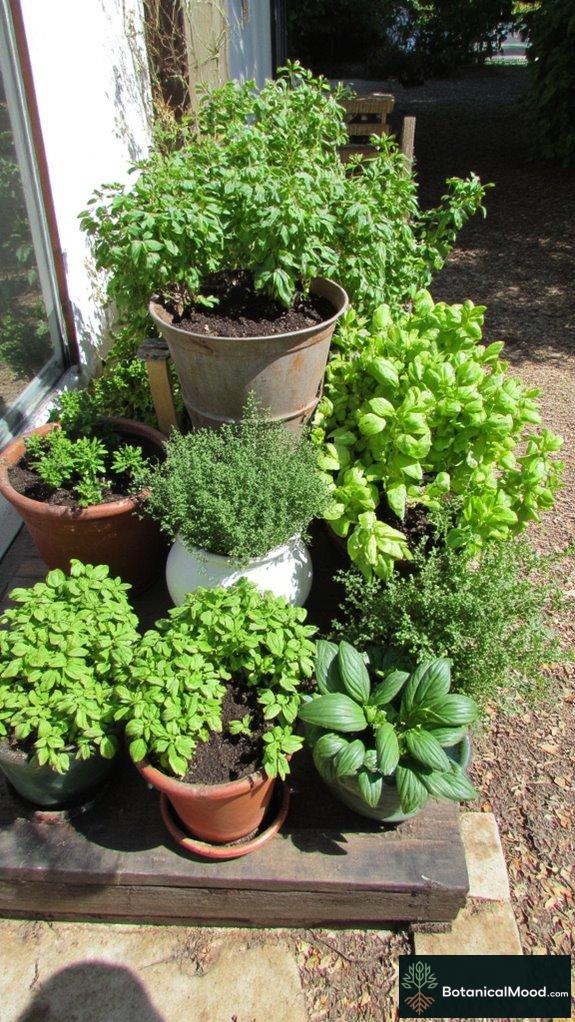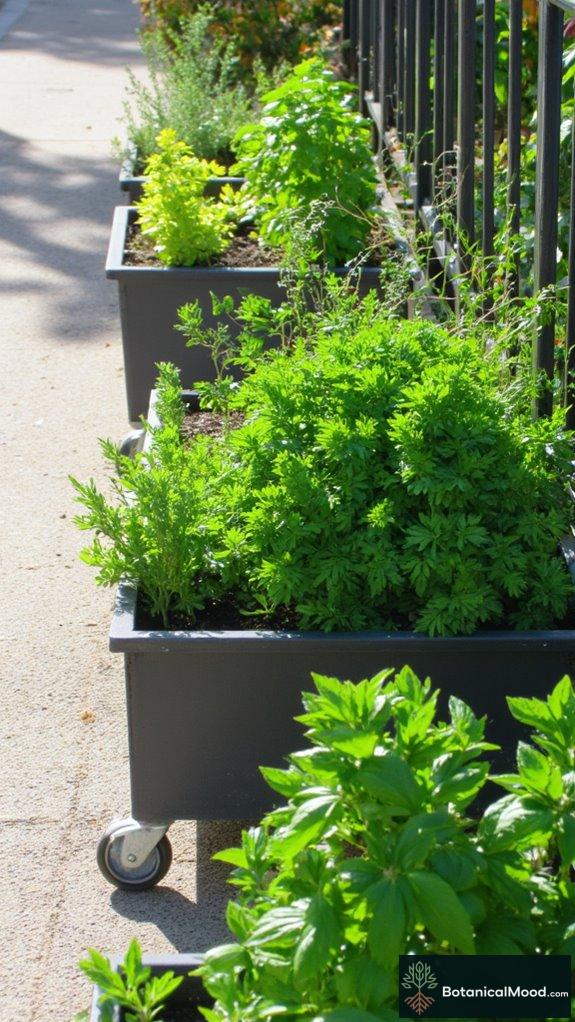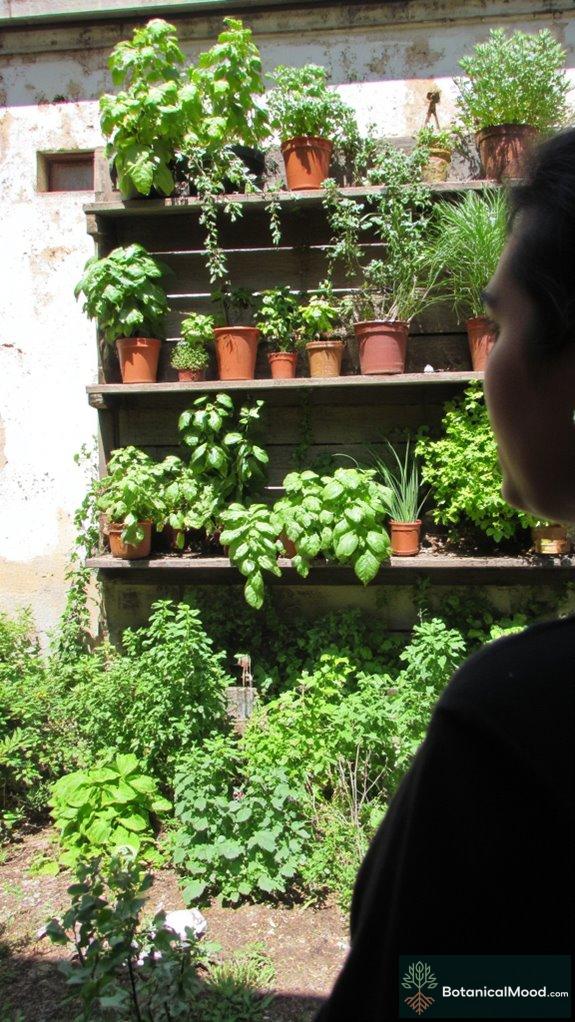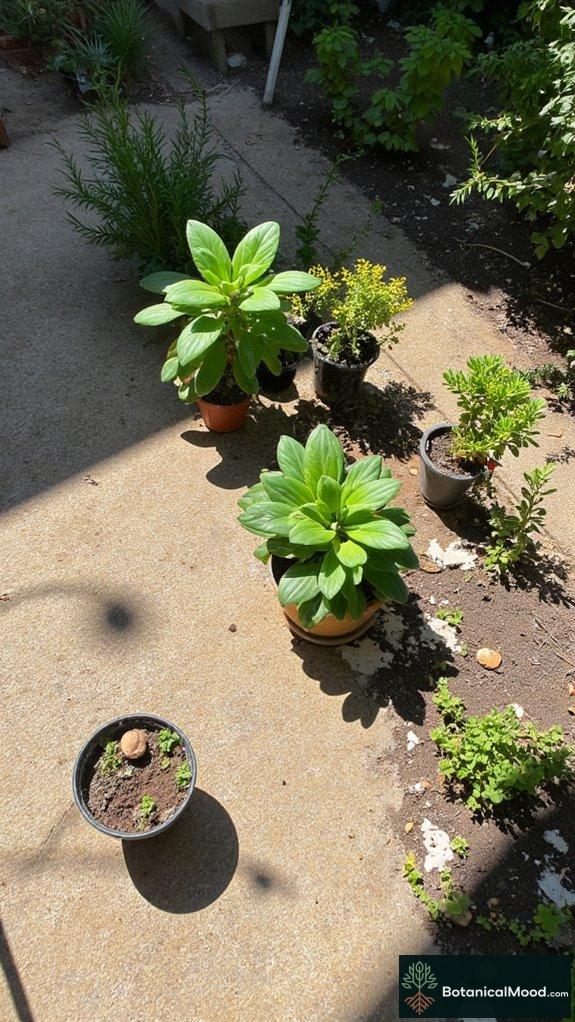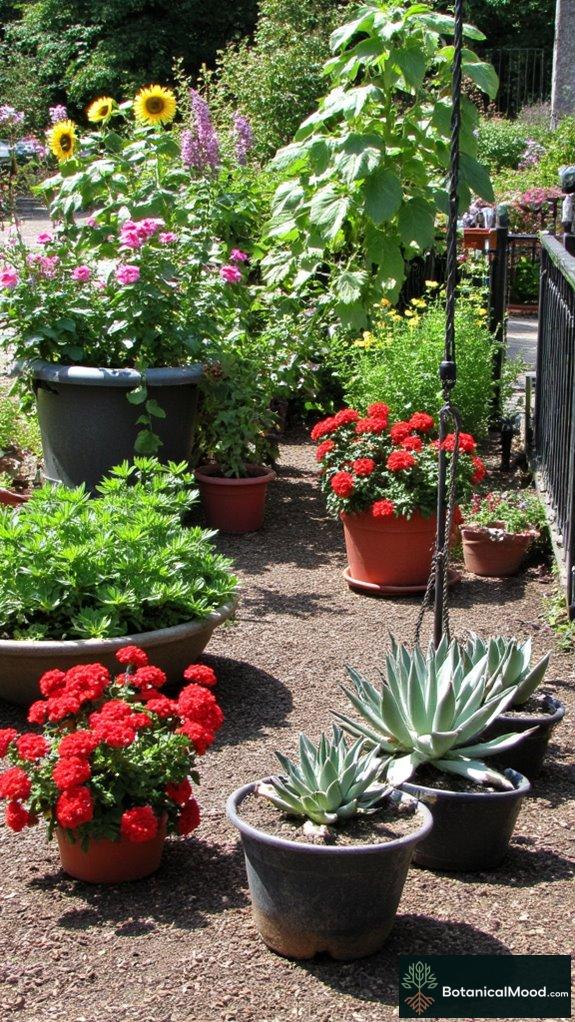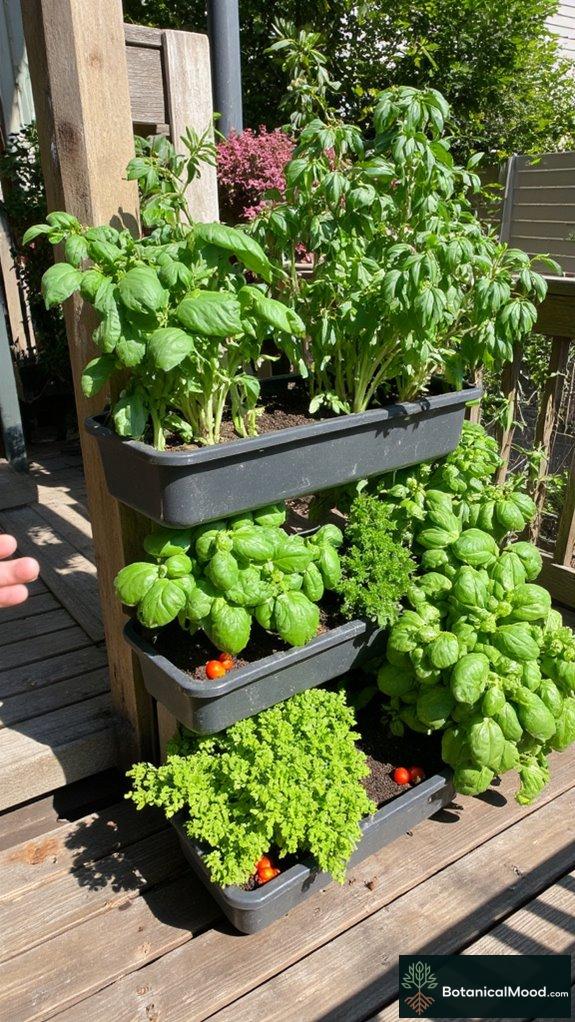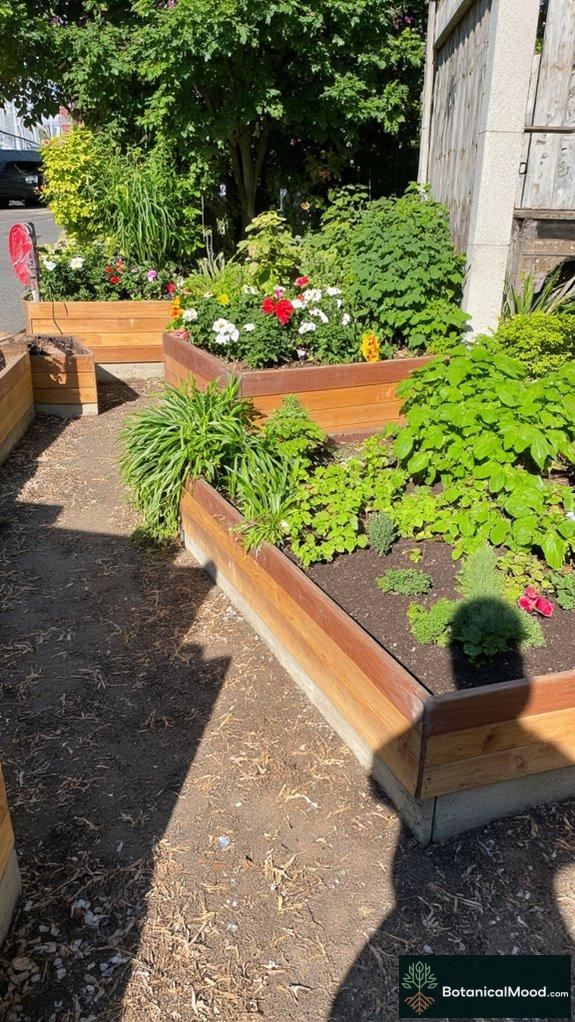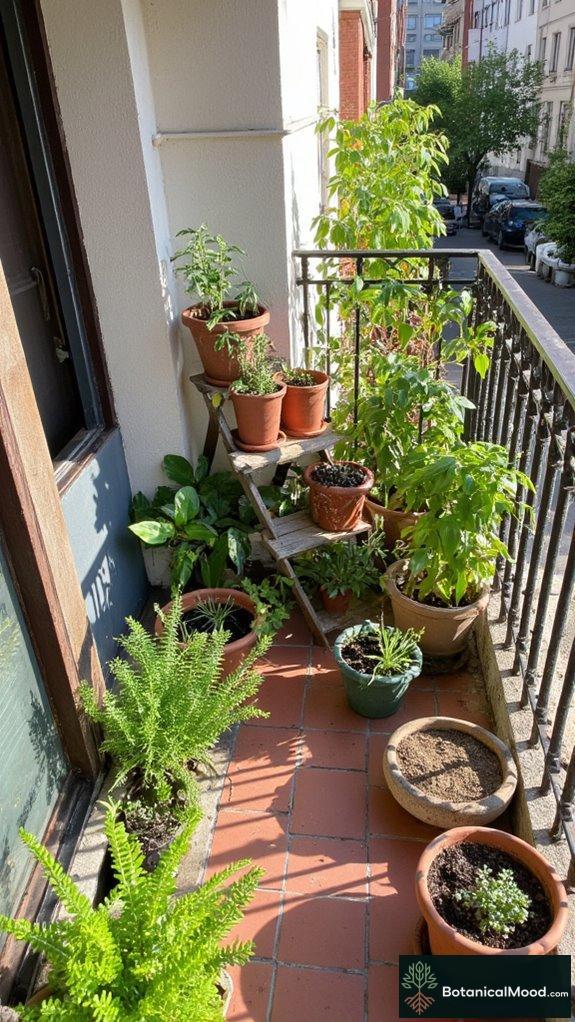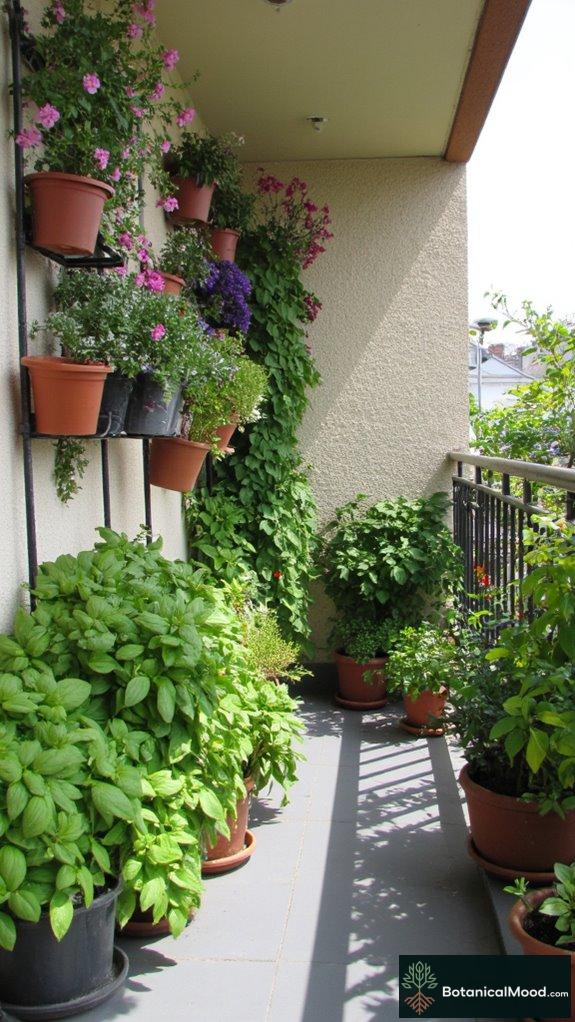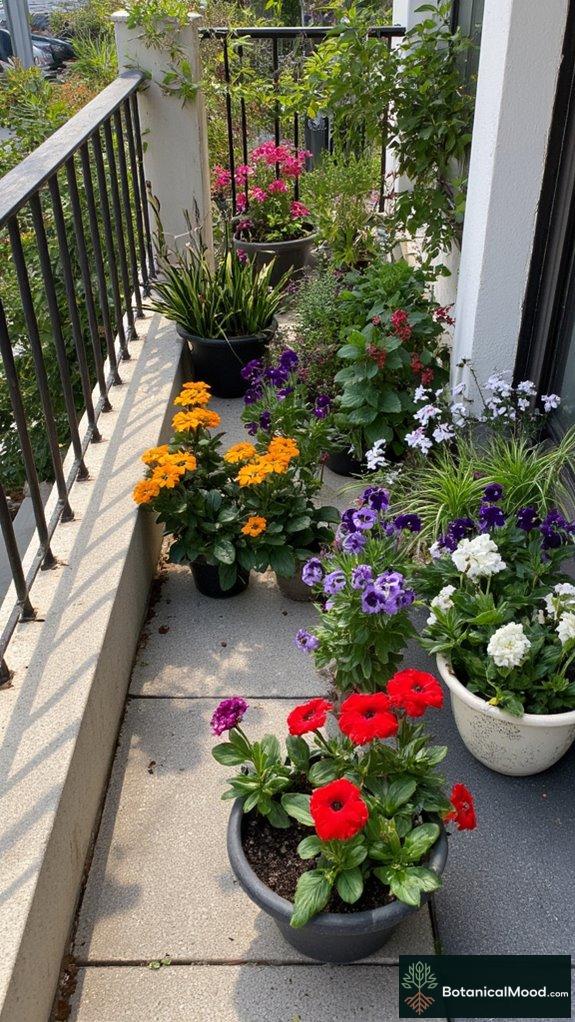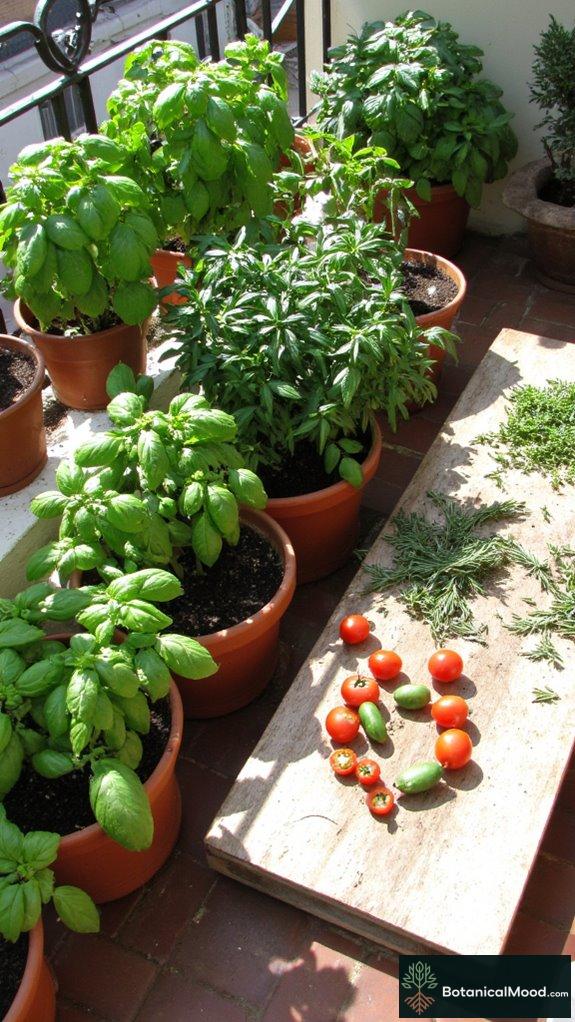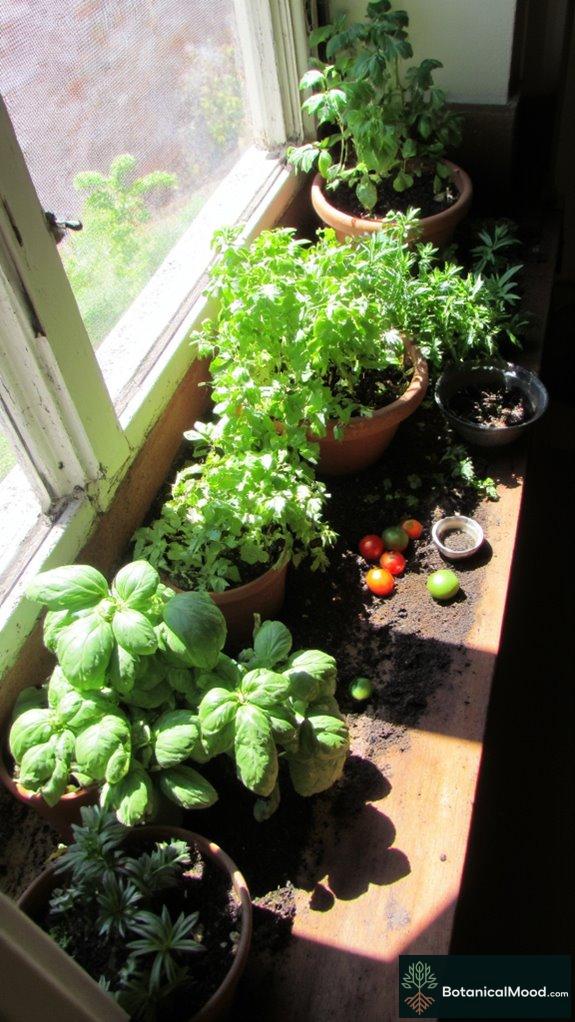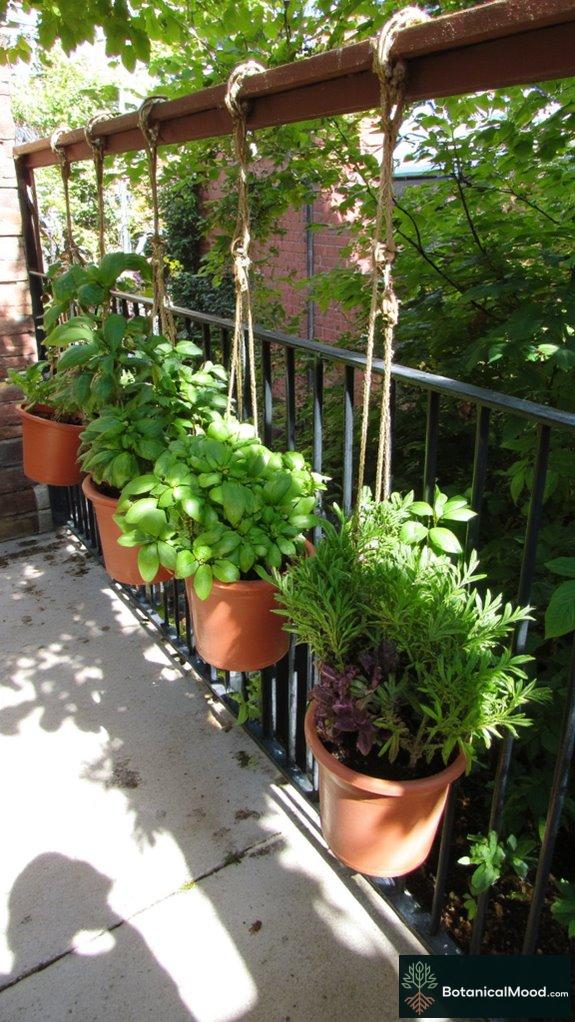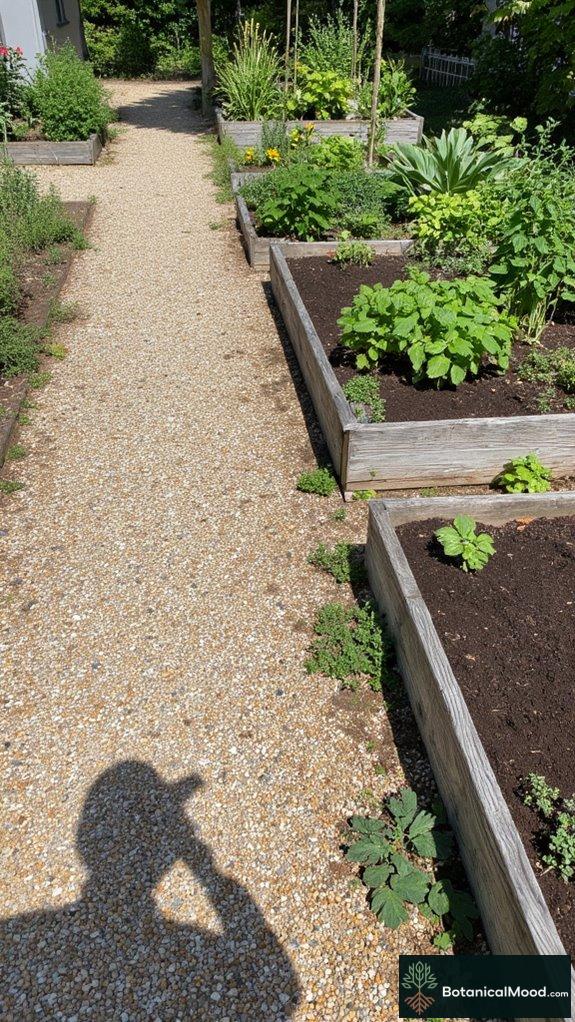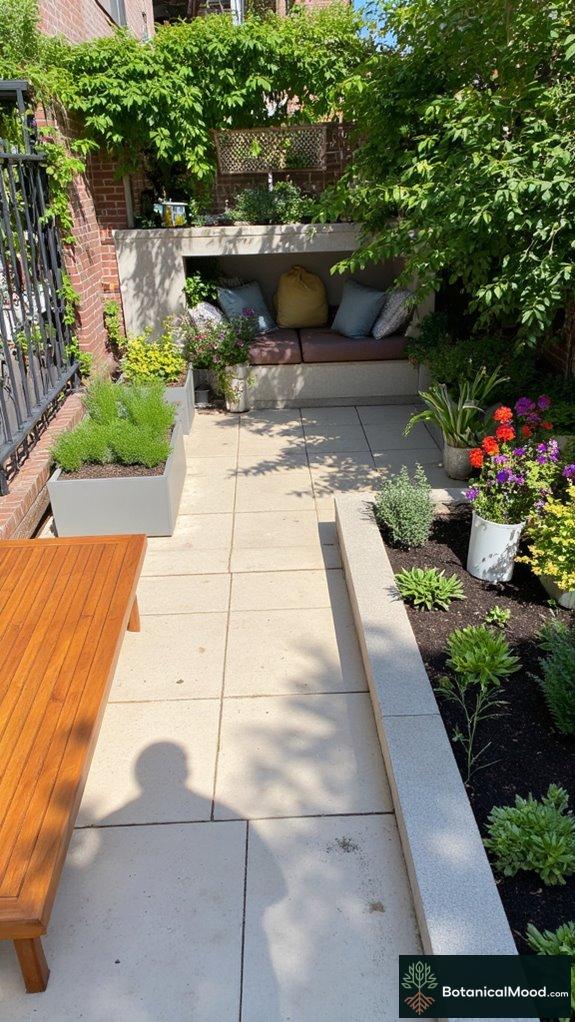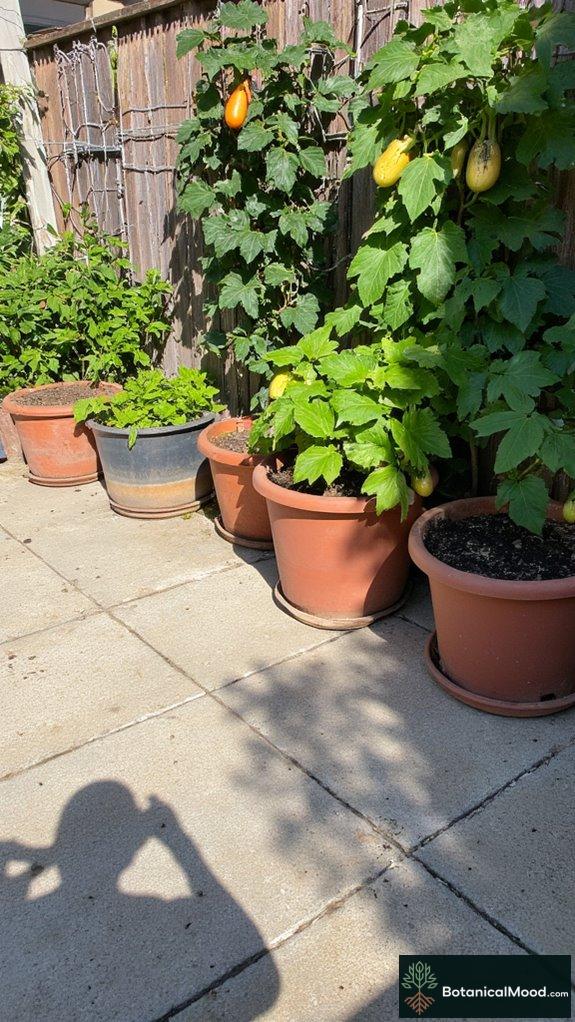Turning a cramped outdoor space into a cozy garden retreat feels like a personal victory, doesn’t it?
I once created a minimalist reading nook in my tiny balcony. I hung Macramé holders for my trailing plants – because apparently, I need plants to spy on my neighbors.
Picture this: a sleek chair, reclaimed wood table, and a whole lot of quiet. My own little world, you know?
And when I added a rustic workshop shed, suddenly I was the “crafty” friend. Who knew vintage charm could make me feel so productive?
But why stop there? What about your space?
Do you crave a tranquil spot or maybe just a place to escape the chaos?
We all deserve that little slice of paradise.
Designing My Dream Garden: A Journey of Testing and Trials
A few years ago, I fancied myself a garden designer — of sorts. I wanted to transform my garden into a floral explosion, but instead, I ended up with a wild jungle. Who knew daisies could be so aggressive?
I learned the hard way that planning matters. So, I took a step back, researched garden layouts, and discovered the magic of companion planting. Now, my space flourishes with harmony instead of chaos! You should see my thriving herbs next to blooming perennials.
Just remember, each tiny outdoor area can be your canvas, filled with colorful blooms, lush greens, and a few surprises along the way!
Quick Takeaways
- Create a minimalist reading nook with Macramé plant hangers and a sleek, weather-resistant chair for serenity and inspiration.
- Design a chic outdoor office pod using sustainable materials and energy-efficient windows to enhance productivity in a lush environment.
- Incorporate a cozy pergola lounge with plush cushions, ambient lighting, and aromatic plants for an inviting atmosphere for relaxation or social gatherings.
- Utilize vertical garden walls to maximize space while incorporating lush greenery and edible herbs for a productive garden experience.
- Transform a stylish storage shed into a cozy retreat with earthy tones, vintage furnishings, and warm decor accents for a relaxing outdoor escape.
Minimalist Reading Nook With Hanging Planters
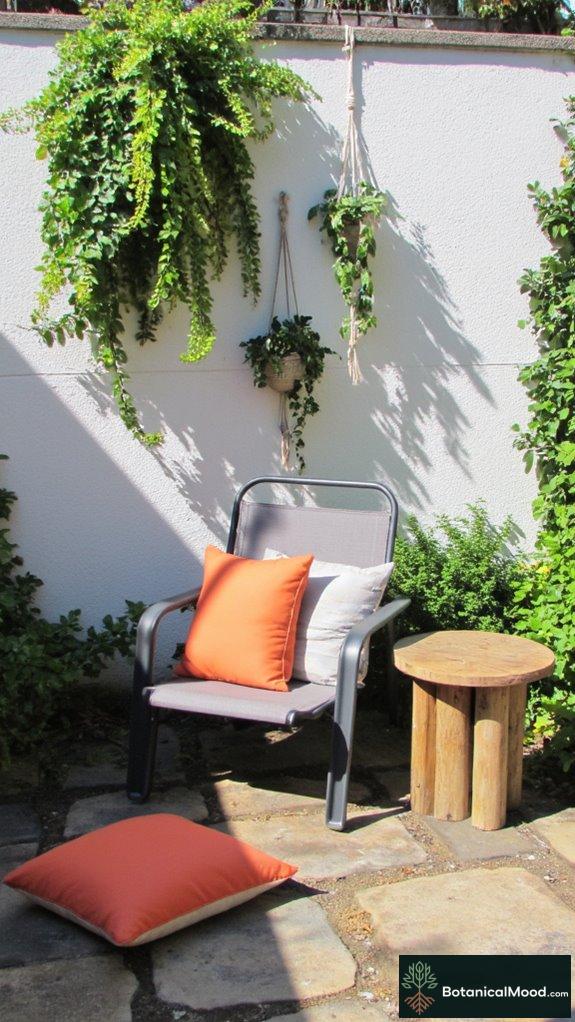
Creating a minimalist reading nook adorned with hanging planters can transform a small outdoor space into a tranquil haven, perfect for curling up with a good book.
Consider using suspended Macramé holders to cradle your favorite trailing plants like String of Hearts (Ceropegia woodii) or English Ivy (Hedera helix). Their cascading foliage will soften your nook, drawing the eye upward.
Pair a sleek, weather-resistant chair with a small side table crafted from reclaimed wood for an eco-friendly touch. Additionally, incorporating minimalist vertical gardens can enhance the overall aesthetic while maximizing your available space.
Opt for vibrant cushions in muted colors to evoke serenity. This harmonious blend creates an inviting atmosphere that fosters relaxation and inspiration, essential for every garden lover.
Rustic Workshop Shed With Vintage Accents

As you step into a rustic workshop shed adorned with vintage accents, you immediately appreciate the charm that such a space can bring to your garden.
Picture reclaimed wood shelves, repurposed tools resting beside handmade pottery, and softly flickering Edison bulbs illuminating your creative work. The natural patina of aged metals, like copper and iron, adds character, while wildflower bouquets (e.g., Achillea millefolium) sourced from your own garden enhance the ambiance. A combination of country chic aesthetics and rustic elements creates an inviting atmosphere that encourages relaxation and creativity.
This serene haven transforms mundane tasks into invigorating experiences, inspiring creativity and fostering a profound connection to nature.
Embracing this rustic aesthetic allows your garden to become a truly expressive retreat.
Chic Outdoor Office Pod With Smart Features

When it comes to finding a dedicated workspace that embraces both style and functionality, a chic outdoor office pod equipped with smart features can be a game changer.
Envision stepping into a sleek, compact structure, seamlessly blending modern design and technology, offering energy-efficient windows, integrated LED lighting, and climate control systems.
Brands like Studio Shed and Garden House provide customizable options in sustainable materials like cedar (Thuja plicata) and recycled steel.
These pods create an inspiring environment, adorned with lush greenery and vibrant plants, allowing creativity to flourish while enhancing productivity in a tranquil outdoor setting—capturing the essence of innovative garden design.
Cozy Pergola Lounge With Comfy Cushions

A cozy pergola lounge invites relaxation and tranquility into your outdoor space, especially when adorned with plush, comfy cushions that beckon you to unwind.
Imagine sinking into vibrant textiles, like Sunbrella® fabrics, designed to withstand the elements yet exude comfort.
Savor the luxury of vibrant Sunbrella® fabrics, crafted for comfort and resilience against the elements.
Add a few thoughtfully selected plants, such as the fragrant Lavandula (lavender) or vibrant Geranium (Pelargonium), to enhance your sensory experience.
Incorporating ambient lighting, such as twinkling fairy lights or lanterns, creates an enchanting atmosphere as evening descends.
This space allows for social gatherings or solitary moments of reflection, offering a perfect fusion of beauty, design, and serenity.
Serene Yoga Retreat Surrounded by Nature

Creating a serene yoga retreat surrounded by nature doesn’t just enhance your practice; it transforms your entire outdoor experience into a peaceful sanctuary.
As I settle onto my organic cotton mat, I’m enveloped by the gentle rustle of native plants like Salvia (Salvia spp.) and the calming scent of lavender (Lavandula angustifolia).
Strategically placed bamboo screens add privacy while maintaining a breezy atmosphere.
Soft, ambient lighting from solar lanterns creates an inviting space for evening meditations.
This mindful oasis merges tranquility with innovative design, reminding us how essential nature is for nurturing the spirit—a core value that inspired my journey with Botanical Mood.
Compact Fire Pit Area With Built-In Seating
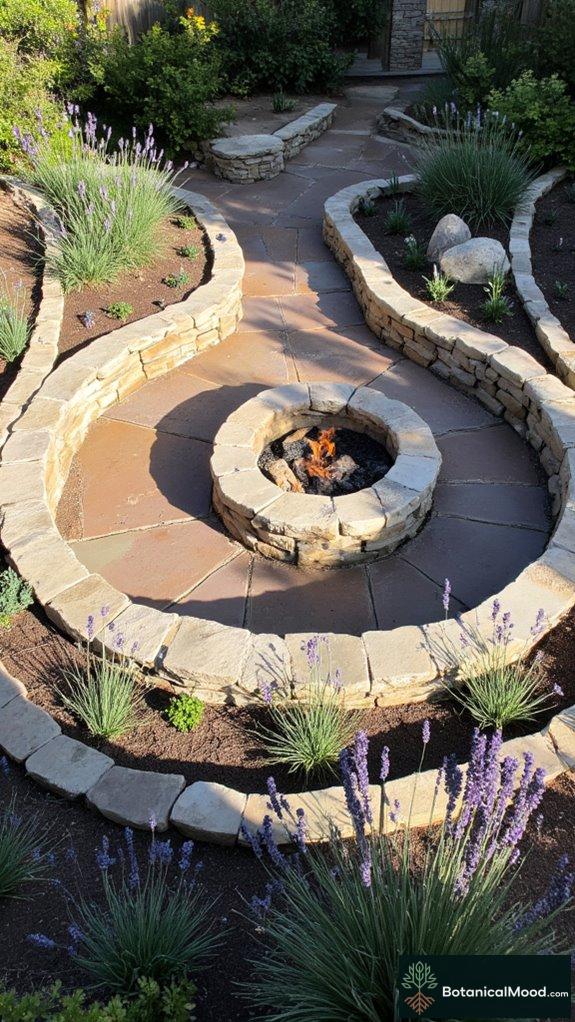
Integrating a compact fire pit area with built-in seating into your outdoor space not only maximizes functionality but also enhances the aesthetic appeal of your garden.
Picture an elegant design where stone or brick (e.g., basalt or bluestone) forms a cozy circular seat, surrounding a modern fire pit. Incorporating weather-resistant cushions in earthy tones not only invites relaxation but harmonizes with surrounding flora.
I love pairing this setup with low-maintenance plants like lavender (Lavandula angustifolia) for enchanting scents. Brands like SoloStove offer chic fire pits that frame the ambience beautifully, inviting friends to gather under the stars while creating unforgettable memories.
Whimsical Garden Art Studio With Natural Light

As I ponder the idea of setting up a whimsical garden art studio, I can’t help but envision how natural light can play an essential role in breathing life into the space.
To enhance my studio, I’ve considered various elements:
| Element | Description | Benefits |
|---|---|---|
| Skylights | Inviting sunlight from above | Illuminates artwork |
| Open Windows | Frames lush views outside | Provides fresh air |
| Reflective Surfaces | Mirrors or shiny finishes | Amplifies natural light |
This harmonious blend of creativity and nature really inspires me. I look forward to filling the studio with vibrant colors and diverse textures, celebrating artistic expression amid the garden’s beauty.
Inviting Tea House With Bamboo Screening
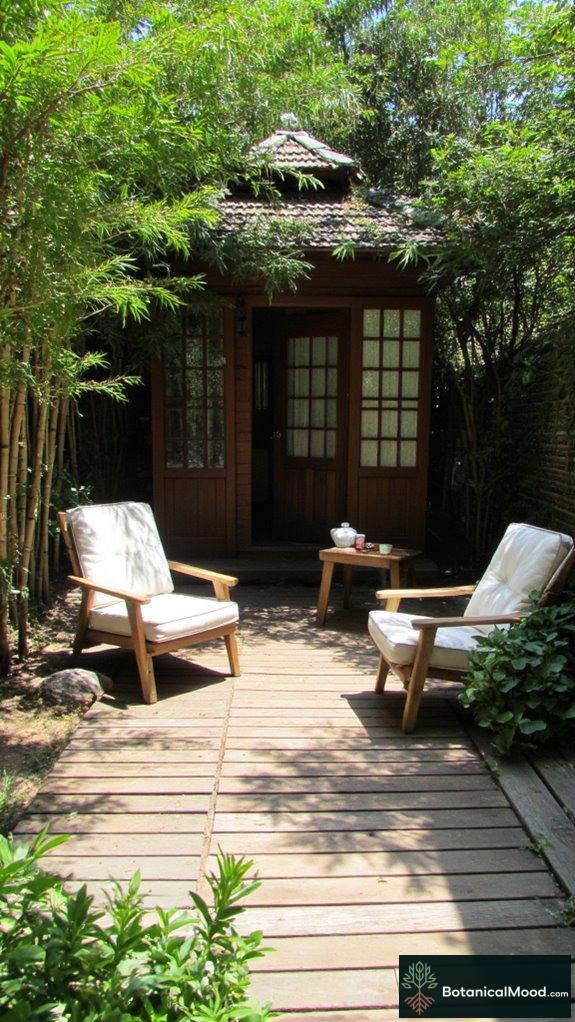
After envisioning a whimsical garden art studio, I find myself captivated by the idea of an inviting tea house, nestled quietly among the flora.
The natural ambiance created by bamboo screening (Bambusa spp.) offers an organic feel, perfect for relaxation and reflection.
The tranquil presence of bamboo screening fosters a serene environment, ideal for moments of peace and contemplation.
Here are some ideas to enhance this serene space:
- Comfortable seating: Opt for lightweight, weather-resistant chairs, maybe even a hanging chair for whimsy.
- Soft lighting: Use solar lanterns or string lights to create a magical evening glow.
- Tea essentials: Incorporate a small table for teapots and cups.
- Surrounding plants: Use fragrant herbs like mint (Mentha spp.) to enrich the atmosphere.
Multifunctional Dining Space Under a Canopy

Creating a multifunctional dining space under a canopy not only transforms an ordinary backyard into a remarkable retreat but also allows for shared moments with friends and family amidst nature.
I’ve adorned my space with a sustainable wooden table, surrounded by weather-resistant chairs, creating a harmonious blend of style and durability. Integrating potted herbs like basil (Ocimum basilicum) enhances the ambiance and your culinary experience.
| Element | Material | Purpose |
|---|---|---|
| Table | Reclaimed wood | Dining/Workspace |
| Chairs | Aluminum with cushions | Comfort/Style |
| Canopy | Fabric UV protection | Shade/Protection |
This setup encourages creativity, making it a true garden gem.
Colorful Playhouse for Kids With Natural Elements

A vibrant playhouse can serve as a delightful focal point in any small outdoor garden, providing a cherished space for children to express their imagination while harmoniously blending with the natural elements surrounding it.
To create this enchanting space, consider the following ideas:
Envision an enchanting playhouse by blending colorful, eco-friendly materials with nature-inspired decor and interactive features for endless creativity.
- Colorful, eco-friendly materials like bamboo (Bambusoideae) for structure.
- Nature-inspired decor, incorporating textures from stones and wood.
- Living plants that double as play elements, such as climbing vines (Campsis radicans) for a whimsical touch.
- Interactive features, such as a chalkboard wall for limitless creativity.
These elements can help foster a joyful connection with nature, embodying the ethos behind Botanical Mood.
Stylish Storage Shed Repurposed as Retreat
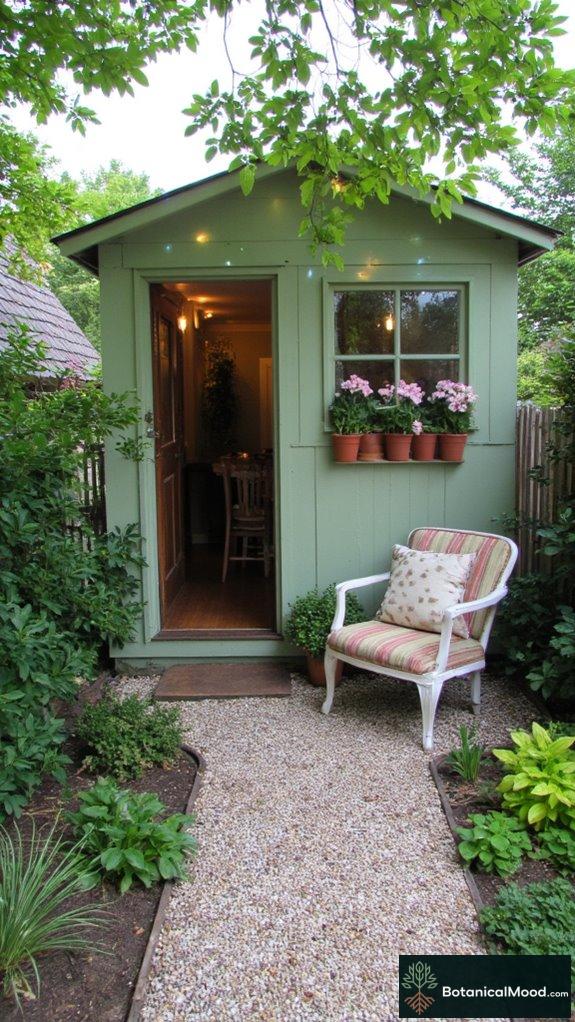
Transforming an ordinary storage shed into a stylish retreat can elevate your small outdoor garden space, offering a unique sanctuary for relaxation and creativity. Envision adorning the interior with cozy seating, ambient lighting, and lush potted plants to bring nature inside.
| Design Element | Description |
|---|---|
| Color Palette | Soft greens, earthy browns |
| Furnishings | Vintage chairs, reclaimed wood |
| Decor Accents | Fairy lights, botanical prints |
I love infusing innovative ideas into garden spaces, turning the mundane into extraordinary. This unique approach reflects both function and art, capturing the essence of a peaceful garden retreat.
Tranquil Meditation Corner With Soft Fabrics

Finding a serene space to unwind and reconnect with oneself is essential, especially in our fast-paced lives, and incorporating a tranquil meditation corner in your garden can offer that refuge.
Here are some ideas to create your perfect peaceful retreat:
- Use soft, natural fabrics like organic cotton or linen for cushions and throws.
- Opt for earthy, calming color palettes, such as muted greens and gentle blues.
- Add aromatic plants like lavender (Lavandula angustifolia) for soothing scents.
- Integrate gentle lighting, through string lights or lanterns, to evoke warmth and serenity.
This harmonious setup inspires reflection and rejuvenation.
Vertical Garden Wall for Small Garden Rooms

Creating a vertical garden wall not only maximizes your outdoor space but also brings an element of lushness to small garden rooms, enriching your living area with life and color.
Here are some inspiring plants for your vertical wall:
| Plant Type | Ideal Location | Benefits |
|---|---|---|
| Ferns (Polypodium) | Shady areas | Air purification |
| Herbs (Basil, Mint) | Sunny spots | Culinary uses and aromas |
| Succulents (Sedum) | Sunlit sections | Low maintenance |
| Climbing Vines (Creeping Fig) | Vertical support | Attractive greenery |
With innovative containers and planting techniques, you can transform your garden room into an urban oasis.
Charming Open-Air Kitchenette With Herb Garden
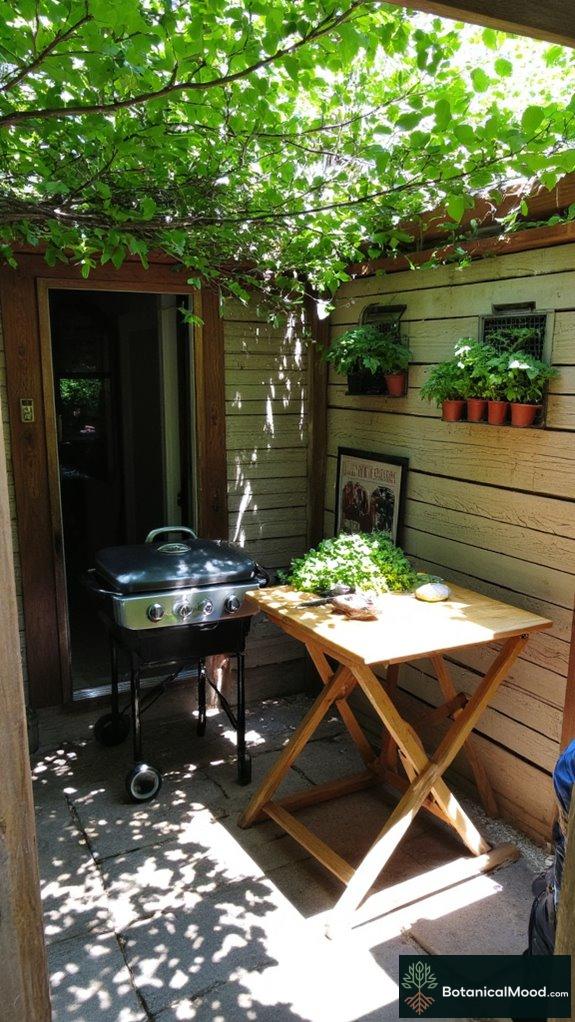
As you step into an open-air kitchenette, the fresh scent of herbs like Ocimum basilicum (basil) and Mentha (mint) greets you, inviting culinary creativity to flourish in your small outdoor space.
Step into your outdoor kitchenette and let the invigorating aromas of fresh basil and mint inspire your culinary adventures.
To maximize this charming area, consider these innovative elements:
- Compact Work Surface: A foldable table for chopping fresh ingredients.
- Vertical Herb Planters: Wall-mounted containers that save ground space and provide quick access to your favorite herbs.
- Vintage-Style Fixtures: Incorporate rustic lighting and materials for an inviting ambiance.
- Portable Grill: Perfect for impromptu outdoor meals, enhancing the joy of al fresco dining.
Elegant Greenhouse With Relaxing Seating

A well-designed greenhouse can become your personal oasis, where the beauty of nature meets the art of relaxation.
Envision a serene space filled with lush greenery, like ferns (Polypodium leukotomos) and delicate orchids (Phalaenopsis spp.), creating a peaceful ambiance.
Incorporating comfortable seating, such as wicker chairs or sleek metal benches, enhances the inviting atmosphere, allowing you to unwind with a book or sip herbal tea.
Use soft, natural colors in your decor, harmonizing with the vibrant plants.
Add personalized touches, like hand-painted pots or soothing water features, for a truly innovative retreat.
It’s about creating your haven with Botanical Mood.
Inviting Outdoor Movie Theatre Setup

Picture the excitement of settling in under a starlit sky, surrounded by lush greenery, while enjoying a classic film with friends and family.
An inviting outdoor movie theatre setup is an innovative way to combine nature with cinematic delight.
Here’s how I’d create this charming experience:
- Screen: Opt for a portable inflatable screen, easy to set up and store.
- Seating: Use cozy bean bags or chic blankets over plush outdoor cushions.
- Lighting: Incorporate twinkling string lights and solar lanterns for a magical ambiance.
- Snacks: Prepare a delightful snack bar with popcorn, candy, and fresh fruits.
Creating this beautiful space enhances evenings spent outdoors and truly elevates the garden experience.
Eco-Friendly Garden Office With Solar Panels

Incorporating an eco-friendly garden office into your outdoor space not only enhances productivity but also serves to harmonize your work environment with nature. I’ve found that installing solar panels greatly reduces my carbon footprint while providing ample energy for my gadgets.
Here’s a quick comparison of eco-friendly options:
| Feature | Benefits |
|---|---|
| Solar Panels | Sustainable energy source |
| Green Roofs | Insulation and biodiversity |
| Recycled Materials | Less waste and innovative design |
| Natural Light Sources | Boosts mood and productivity |
| Aromatic Plants (Lavandula) | Enhances well-being |
Investing in such elements not only beautifies my workspace but also nurtures a thriving ecosystem.
Adaptive Multi-Use Space With Foldable Furniture

Creating an adaptive multi-use space in my outdoor garden has transformed the way I engage with my environment, as I’ve discovered that foldable furniture offers remarkable versatility.
Here’s how I’ve optimized my garden with clever choices:
- Folding chairs: Lightweight and easy to store, perfect for gatherings or solo relaxation.
- Expandable tables: Adjusts smoothly to accommodate both intimate meals and larger gatherings.
- Stackable benches: Ideal for whimsical seating that transforms from functional to compact.
- Portable loungers: Offers comfort during sunny days while being effortless to relocate.
I cherish how these innovations meet varied needs while maintaining elegance in design.
Charming Furniture for Small Patios

When you step into a small patio, a variety of charming furniture options can instantly elevate the atmosphere and functionality of your outdoor retreat.
Imagine sleek rattan chairs, perfectly paired with vibrant, weather-resistant cushions, offering both comfort and durability. A compact bistro set invites intimate meals, while multi-purpose storage benches keep clutter at bay. Opting for slim, space-saving designs can allow you to maximize your limited space without sacrificing style.
Adding colorful throw pillows or soft outdoor rugs infuses warmth, enhancing the cozy vibe. Incorporating potted plants or vertical gardens (like *Ivy* or *Ferns*) softens the surroundings, inviting relaxation.
With carefully curated pieces, I guarantee my small patio becomes a stylish sanctuary, a reflection of the idea that less can truly be more.
Space-saving Furniture Arrangement

Maximizing the potential of a small outdoor garden room can be quite the challenge, yet thoughtful space-saving furniture arrangements can transform it into a harmonious retreat.
Here are some innovative ideas to take into account:
- Fold-away desks that tuck against the wall when not in use.
- Ottomans with hidden storage that double as extra seating.
- Extendable dining tables for versatile entertaining options.
- Lightweight, movable furniture, like metal armchairs, for flexible arrangements.
Meet the Garden Designer

Meet Vanessa Clough, a passionate garden enthusiast from Portland, Oregon. After years of living in an urban apartment, she longed for a personal outdoor sanctuary that could combine her love for nature with hosting.
To bring her vision to life, Vanessa engaged in an extensive garden design process, starting with meticulous planning and sketching of her ideas. She consulted professional garden designers and utilized resources from local nurseries to select the right plants for her small space garden, focusing on vertical gardening techniques to maximize her area.
For the implementation, Vanessa used essential tools such as a trowel, pruners, and a garden fork from brands like Fiskars and Felco.
She incorporated chic accessories like container planters from the Martha Stewart Garden Collection and sought advice from local horticulturists to guarantee that her plant choices thrived in Portland’s climate.
Urban Container Gardening Techniques
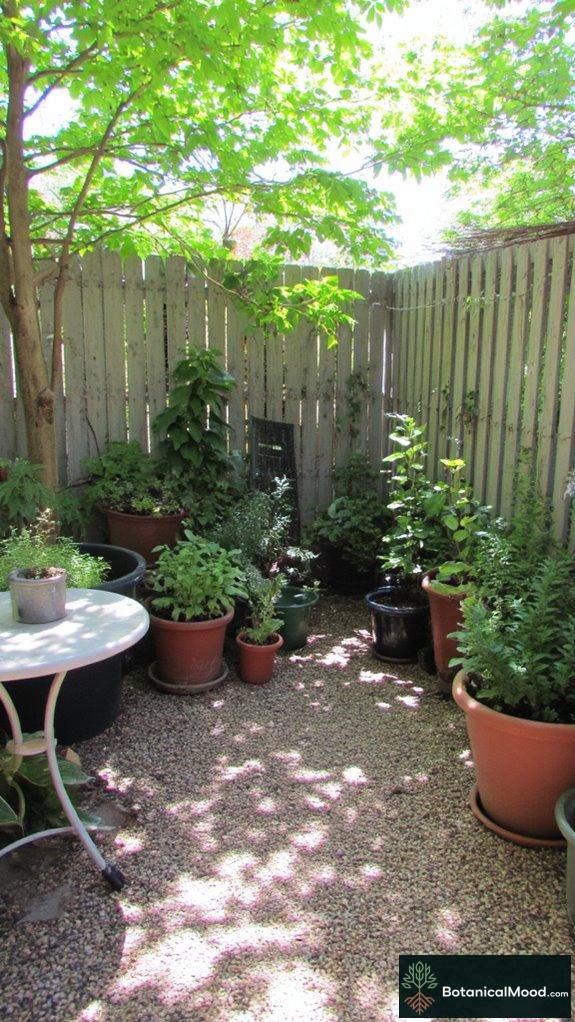
Urban container gardening opens up a world of possibilities, transforming even the tiniest balcony or patio into a lush, vibrant escape.
Selecting larger containers with drainage holes guarantees better plant growth, while repurposed items like milk crates or plastic pools offer sustainable, cost-effective options.
Larger containers with drainage holes enhance growth, while repurposed items provide eco-friendly, budget-friendly gardening solutions.
Utilizing high-quality potting mixes with organic compost keeps nutrients balanced, and regular fertilization is key for thriving plants.
Employing vertical gardening techniques maximizes space, enabling mobility for light access.
Selecting compact vegetables (e.g., Solanum lycopersicum) and herbs (e.g., Ocimum basilicum) optimizes your culinary experience, creating a flourishing urban oasis with beauty and sustainability at its heart.
Garden Design FAQ
How Can I Choose the Best Location for My Garden Room?
I prioritize sunlight and accessibility when choosing my garden room’s location. I avoid shaded areas, ensuring I have a stunning view while remaining close to my home. Everyone loves easy access to their cozy spaces!
What Are the Best Plants for Privacy in Small Garden Rooms?
Funny enough, I find that bamboo’s like a privacy ninja! For a softer look, I adore climbing roses and fragrant jasmine. They’re chic, innovative, and make my small garden room feel like a secret paradise!
How Do I Ensure My Outdoor Room Stays Comfortable in Different Weather?
I keep my outdoor room comfortable by using adjustable shades, weatherproof furniture, and cozy textiles. I also add a small fan or heater as needed, ensuring a delightful retreat throughout changing seasons and unpredictable weather.
What Are Effective Ways to Incorporate Lighting in Small Garden Rooms?
I love using string lights to create an enchanting atmosphere in my small garden room. Incorporating lanterns and dimmable lamps adds flexibility. Using solar-powered options is eco-friendly and efficient, enhancing both style and comfort effortlessly.
How Can I Personalize My Outdoor Space Without Overwhelming It?
Have you ever wondered how to make your outdoor space truly yours? I focus on selecting a few unique decor pieces, adding personal plants, and incorporating colors that resonate with me—without cluttering my cozy sanctuary.
Summary
Transforming my small outdoor space into a cozy garden retreat has been a wonderful journey. Every detail matters, whether I add a chic office pod or a peaceful yoga corner. It’s about creating a sanctuary that feels uniquely mine.
I’d love to hear about your own experiences with creating your outdoor oasis. What inspired your design?
Feel free to share some pictures of your garden! I’d love to see how you’ve designed your space.
References
- https://www.autonomous.ai/ourblog/create-the-ideal-small-garden-room-to-relax-and-thrive
- https://bowerandbranch.com/blogs/landscape-design/designing-your-yard-as-outdoor-garden-rooms
- https://www.prettypurpledoor.com/garden-rooms/
- https://www.houzz.ie/magazine/5-garden-room-ideas-for-petite-plots-stsetivw-vs~144818270
- https://www.gardendesign.com/landscape-design/garden-rooms.html
- https://www.theottohouse.com/blog/fun-garden-room-ideas
- https://farmhouse1820.com/15-garden-room-ideas-to-bring-the-outside-in/
- https://greatbackyard.com/blogs/news/creative-patio-furniture-arrangements-for-small-spaces
- https://www.westelm.com/m/pages/ideas-and-advice/small-patio-ideas/
- https://www.lowes.com/n/ideas-inspiration/small-patio-spaces
- https://www.youtube.com/watch?v=6RBqZHWTiZ8
- https://www.houzz.com/discussions/6489010/patio-furniture-ideas
- https://www.wayfair.com/furniture/cat/small-space-patio-furniture-c1866731.html
- https://intothegardenroom.com/garden-room-furniture-ideas/
- https://www.livingetc.com/ideas/outdoor-furniture-layout-for-a-small-patio
- https://www.trexfurniture.com/blogs/style-guides/12×16-deck-furniture-layout
- https://www.youtube.com/watch?v=5RzETFGaTtI
- https://www.patioproductions.com/blog/features/arranging-patio-furniture/
- https://authenteak.com/blog/patio-furniture-arrangement-ideas/
- https://www.houzz.com/discussions/709772/i-need-your-help-designing-a-seating-arrangement-for-a-small-sunroom
- https://smallfarms.cornell.edu/2017/05/12-container-gardening/
- https://dug.org/gardening-resources/guide-to-container-gardening/
- https://www.summerwindsnursery.com/az/inspire/blog/urban-container-gardening/
- https://www.stonegableblog.com/everything-you-need-to-know-about-container-gardening/
- https://celebrateurbanbirds.org/learn/gardening/container-gardening/
- https://www.urbanmicro.farm/cultivate-your-urban-oasis-the-ultimate-beginners-guide-to-container-gardening/
- https://www.yougrowgirl.com/resources/container-gardening-guide/
- https://www.sandiegocounty.gov/content/sdc/lueg/food-system-initiative/gardening-tips-and-tricks.html




